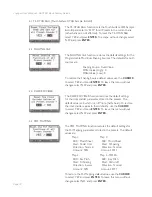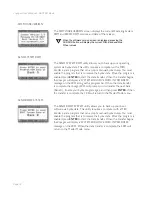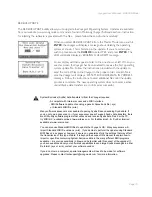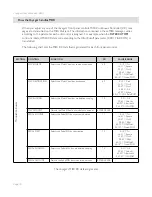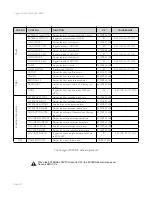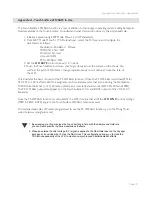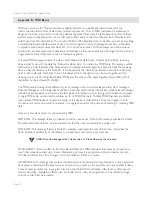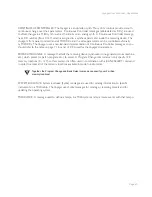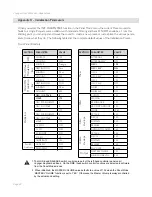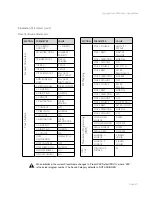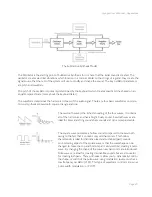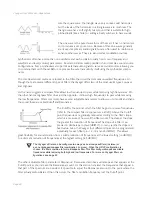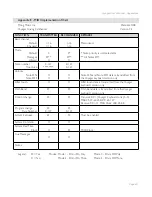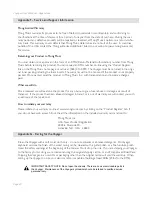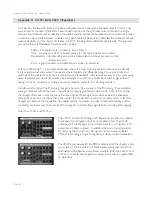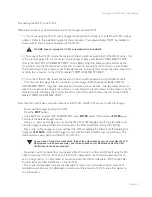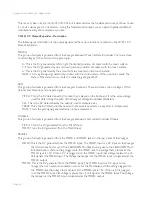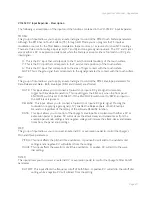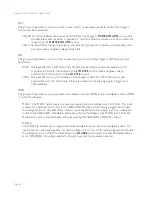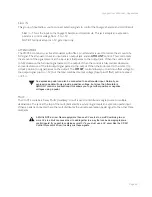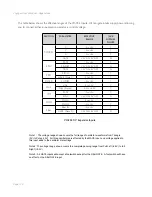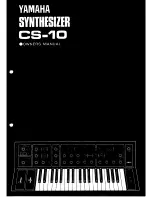
Page 86
Voyager User’s Manual - Appendices
Page 87
Voyager User’s Manual - Appendices
Like the square wave, the triangle wave only contains odd harmonics,
but the levels of the harmonics in a triangle wave are much less. The
triangle wave has a soft, slightly buzzy sound that is suitable for high-
pitched leads (like a flute) or adding a beefy sub-bass to bass sounds.
The sine wave is the purest waveform of them all. It has no harmonics,
so it produces a very pure tone. Because of this, sine waves generally
aren’t used as primary audio signals, but are often used to reinforce or
enhance other waves. They are also used as modulation sources.
Synthesizers often have more than one oscillator, and each oscillator usually has its own frequency and
waveform and level (volume) parameters. Several oscillators make possible rich and complex sound source
configurations. Some synthesizers also permit external audio signals to serve as sound sources, allowing you
to combine them with the oscillators, or process the external audio by itself using the synthesizer compo-
nents.
The combined sound sources are routed to the Filter, the circuit that removes unwanted frequencies. Al-
though there are several different types of filters, the Voyager offers two of the most useful types: Lowpass
and Highpass.
As the name suggests, a Lowpass filter allows low frequencies to pass while removing high frequencies. On
the other hand, a Highpass filter does just the opposite - it allows high frequencies to pass while removing
the low frequencies. Filters commonly have several adjustable parameters to allow you to modify and shape
the sound; these are called Cutoff and Resonance.
The Cutoff is the point at which the filter begins to remove frequencies
(refer to the Lowpass filter response curve at left). Above the Cutoff
point, frequencies are gradually reduced according to the filter’s slope,
which is a measure of how well the filter works. The steeper the slope,
the greater the reduction of frequencies. The slope of a filter is ex-
pressed in decibels per octave (dB/Oct). In many synths the slope is a
fixed value, but in the Voyager four different slopes can be programmed
individually for each filter (-6, -12, -18 and -24 dB/Oct). This allows
great flexibility for sound creation, from a subtle reduction of frequencies at the lowest setting (-6 dB/Oct)
to a dramatic reduction of frequencies at the highest setting (-24 dB/Oct).
The other adjustable filter parameter is Resonance. Resonance describes a variable peak that appears at the
Cutoff point as you increase the Resonance amount. As this amount is raised, the frequencies that appear in
that part of the spectrum are boosted. It’s possible to adjust the Resonance amount to the point where the
filter actually self-oscillates. When this occurs, the filter’s oscillation frequency is at the Cutoff point.
The Voyager’s filters can be configured two ways: as dual Lowpass filters (in stereo) or
as one Highpass/Lowpass filter combination (in mono). When the HP/LP configuration is
chosen, the filters combine to form a Bandpass filter. This filter configuration passes middle
frequencies while removing both high and low frequencies. For more on Voyager filter con-
figurations, see page 25.

